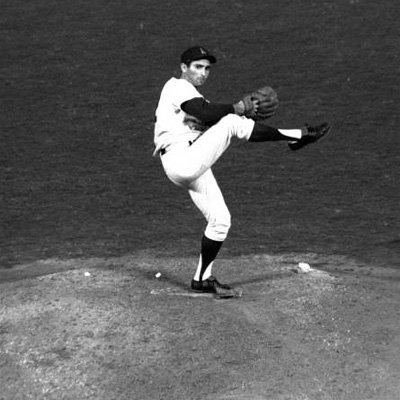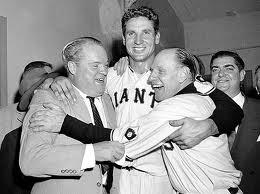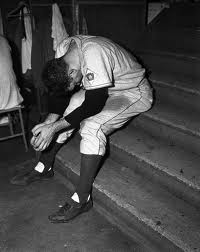|
The Question Box
By Ray Corio
Ever wonder about the average weight of major league
umpires? Or if a perfect game can include
an error by the winning team? Or
why baseball players spit so often?
Quite a few readers were curious about those and
other such sports-related matters, I learned, during my ‘’interim‘’
term tending to The New York Times
SportsMonday Question Box from 1984-1993.
Over a range of more than 400 columns, distilled from an average of 15-20
letters a week, I answered roughly 2,000 questions. But
one I never answered stands out: which sport
elicits the most questions?
Baseball, unquestionably. By a city and country mile. It
made up more than 85 percent of the letters submitted. Be it
Super Bowl week, Kentucky Derby week, the N.
C.A.A. basketball tournament, the Olympics or World
Cup, readers wanted to know “If a runner on
second base with one out leaves the base too soon . .
. .’’
The national passion for the national pastime
was just dandy for me , a lifelong sports
nut encased in a baseball shell. So when
S. Lee Kanner retired in 1984 as the Question Box
editor at The Times, this assistant sports editor, naturally, was asked
to pinch-hit until a successor emerged.
What an at-bat!
By the time
the column was retired nine years later, I had been nicknamed
“Mr. Box” and designated as the staff’s go-to
guy for any reporter or editor in the
entire newsroom.
Beyond the newspaper, friends and relatives also
caught on. “Hey Ray, I’ve got one I bet you can’t
answer,” became a daily challenge, and nuisance.
The column, born when SportsMonday was created
in 1978, invited readers to submit questions on
any aspect of sports: statistics, records,
rules or strategies. Sounds dry, even by
Times standards, so I would enrich the
answers with a smile or two. And a
cartoon by Tom Bloom with a witty caption helped, too.
Letters arrived from all types, particularly
doctors, teachers and retirees; lots of retirees.
There were inquiries from Brazil (basketball),
Canada (curling), and the entire United
States (fencing, boxing, six-day bicycle races,
etc. ) Even a question from my former high school
mathematics teacher, who remembered me
from the school newspaper. Tha t led to a
reacquaintance.
Another reader wondered if I was related
to Ann Corio, the legendary stripper from
burlesque days. It’s a question I’ve been
asked many times, and the answer is still,
‘’Not even barely.”
As for sports questions, they often
demanded research, which often turned up
an irony or interesting note that upstaged the
original question. This was all pre-Internet,
so my sources were record and rules
books, as well as phone calls to team media
directors (not so good), halls of fame (better),
headquarters for the sports (even better), the
Elias Sports Bureau (always reliable) and often major
league umpires like Marty Springstead (the
best). I learned never to disagree with
umpires.
Over the years, I also learned how
truly popular Babe Ruth, Ted Williams, Joe
DiMaggio, Sandy Koufax, and the Bobby
Thomson-Ralph Branca dynamic still are.
Here’s a
sample question:
If a Dodger fielder dropped a foul pop during
Sandy Koufax’s perfect game against the
Cubs in 1965, would the perfect game be spoiled?
The answer: Hardly, so long as Koufax
retired the batter and every other one
without anyone reaching base. But the fielder
would be charged with an error for
‘’prolonging the player’s at-bat.”
So there would be an error for the winning team in a
perfect game by the winning pitcher.
And this one: Did Bobby Thomson hit
any other home runs off Ralph Branca
in 1951 before the pennant-winning ‘’shot
heard ‘round’ the world” in the playoff
against the Dodgers?
The answer: Thomson hit two others off
Branca that season, one in the first
playoff game two days earlier.
Interestingly, Branca allowed 19 homers that
year, 11 to the Giants, and Thomson hit 8 of his 32
homers off the Dodgers.
For one question, I got the answer
directly from the subject, Dick Lynch, whom I
met at my chiropractor’s office (apparently a
frequent hangout for ex –football players).
Lynch was a former Notre Dame halfback and defensive
back, whose 3-yard touchdown run against
Oklahoma in 1957 ended college football’s
longest winning streak at 47 games. A reader
wondered if Lynch had ever played at
running back during his career with the
New York Giants in the National
Football League.
‘’I never had a down in the
pros,’’ Lynch told me, pointing out
that the Giants were so successful that
they kept him at defensive back and
kick returner. Lynch managed 37 interceptions
and scored 7 touchdowns, but the player who
carried the day for Notre Dame never carried
the ball from scrimmage as a pro.
That answer was obtained easily, but others, like the
weight of umpires and the penchant for
spitting in baseball, wound up in my
can’t-answer file, along with one I received a
year after the column had been
phased out. It came from a marketing consultant
in Englewood, N.J., a frequent
contributor:
“Hey, what happened to Ray Corio and
his Q&A?”
table of contents
|


